Game Plan Spread
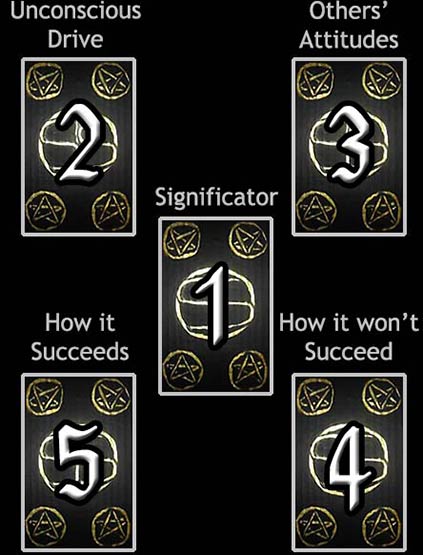
Difficulty: Easy
When a person has a certain plan in mind, this simple five-card spread presents a choice, hinting at what action or attitude should be taken for their plan to succeed, and what should be avoided to help the plan work out for the best.
The initial card is laid in the centre of the layout, the significator. The following four cards are laid out clockwise around the significator.
In this spread, the second card is about what drives the reader, but also says they are not fully conscious of this, perhaps even completely unaware of it. It provides a hint as to the reason they strive for their goal.
The third card uncovers what others think of the reader and their goals. The reader may or may not be aware of this. Sometimes other people factor into the plans (and sometimes they don't).
The fourth card suggests what not to do. If things are permitted to go down this path, the plan will collapse.
The fifth card is a hint as to how to make this plan work out favourably. The idea this card presents should be followed to make the plan successful. It is the differences between Cards #4 & #5 that should be noted, as the differences provide important clues.
Your Game Plan Reading
Unconscious Drive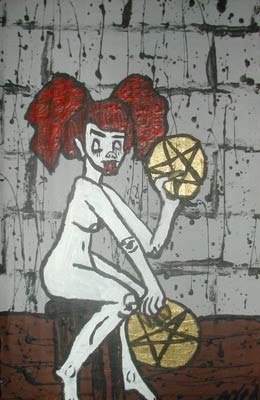 Two of Pentagrams |
External Influences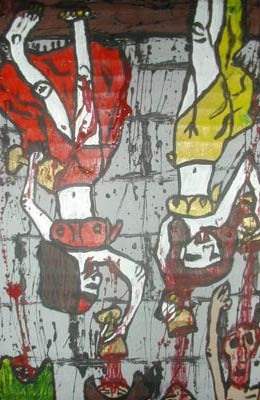 Four of Cups |
|
Significator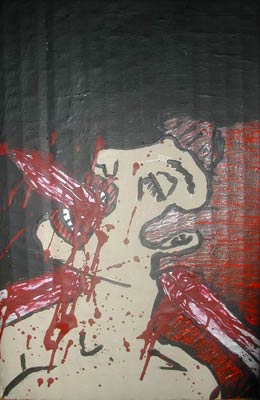 Two of Swords |
||
How it Will Succeed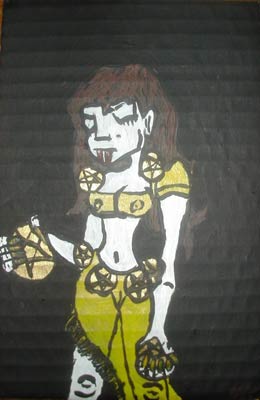 Eight of Pentagrams |
How it Will Not Succeed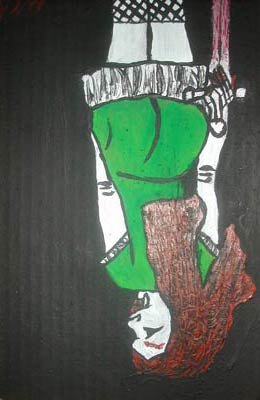 Queen of Swords |

Two of Swords
Symbolism:
A woman stands holding two crossed swords, her eyes veiled. This imagery reflects a difficult choice or mental conflict, where decisions are held at bay. The crossed swords suggest that balance and equanimity are required, but the veiled eyes hint at hesitation or avoidance.
Meaning:
The Two of Swords represents a situation where you are facing a decision but may be avoiding it. The veil over the woman's eyes suggests a mental block, where the truth is not being seen or acknowledged. It calls for careful contemplation to find balance and make a choice, urging you to confront your indecision.
Keywords:
Upright: Decision, mental conflict, balance, choices, indecision.

Two of Pentagrams
Symbolism:
A young female vampire holds two pentagrams in her hands while seated in her dungeon. She appears to be balancing both objects, a representation of adaptability and change. The setting suggests a careful juggling of duties, with an eye on the future and a mind on the present.
Meaning:
The Two of Pentagrams is a card of adaptability, change, and managing multiple responsibilities. It suggests that you may be juggling different aspects of your life—finances, work, relationships—and must find balance to avoid becoming overwhelmed. It invites flexibility and encourages you to embrace change rather than resist it.
Keywords:
Upright: Balance, adaptability, change, flexibility, resourcefulness.

Four of Cups
Reversed
Symbolism:
Two female vampires revel in the night, intoxicated by an excess of life force. Their satiation and indulgence highlight the dangers of overindulgence, while the cups represent both nourishment and excess.
Meaning:
The Four of Cups suggests the enjoyment of life, novelty, and pleasure. It indicates a time for exploration and a renewed sense of joy. This card can point to social events or gatherings where joy is found in connection and revelry. It also symbolizes the introduction of new opportunities, making it a time of emotional satisfaction and new connections.
Reversed, the card warns of weariness, aversion, or dissatisfaction despite indulgence. It may point to disillusionment with current pleasures or a sense of boredom in relationships.
Keywords:
Reversed: Weariness, dissatisfaction, aversion, boredom, disillusionment.

Queen of Swords
Reversed
Symbolism:
The Queen of Swords stands tall, her gaze unwavering as she flaunts herself with calculated poise. Her demeanor combines sorrow and sharpness, reflecting wisdom earned through hardship. A single sword rests in her hand, pointed skyward, symbolizing clarity, truth, and intellect. The surrounding environment is barren yet serene, highlighting her emotional resilience and detachment.
Meaning:
The Queen of Swords represents intellect, independence, and clear judgment. She is a figure of sharp wit and decisive action, unafraid to make difficult choices. This card often symbolizes someone who has weathered emotional storms and now relies on logic and fairness to navigate life. It calls for honesty, objectivity, and discernment in your decisions.
Reversed, the Queen of Swords warns of malice, manipulation, or the misuse of intellect. It can indicate someone who is overly critical, cold, or deceitful. This card may also suggest clouded judgment or emotional imbalances affecting decision-making.
Keywords:
Reversed: Malice, manipulation, emotional imbalance, deceit, criticism, clouded thinking.

Eight of Pentagrams
Symbolism:
An exotic dancer adorned in pentagrams performs, her act representing craftsmanship and skill. She embodies the dedication to her craft, with a focus on discipline and mastery.
Meaning:
The Eight of Pentagrams speaks to hard work, craftsmanship, and the pursuit of excellence. It suggests a time of preparation and dedication to one's skills. Whether in a professional or personal capacity, this card encourages you to continue honing your abilities and remain committed to your goals.
Keywords:
Upright: Craftsmanship, dedication, skill, preparation, hard work.
